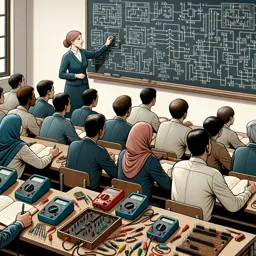What is Electronic Circuit Design?
Electronic circuit design is the process of creating circuits to perform specific functions using electronic components like resistors, capacitors, transistors, diodes, and integrated circuits. This field blends creativity and technical knowledge to build systems ranging from simple electronic gadgets to complex industrial machinery.
Key Components in Electronic Circuits
- Resistors: Limit the current flow and divide voltages.
- Capacitors: Store and release electrical energy.
- Transistors: Act as switches or amplifiers in a circuit.
- Diodes: Allow current to flow in one direction only.
- Integrated Circuits (ICs): Combine multiple electronic components into a single chip.
Steps in Electronic Circuit Design
- Defining the Function: Start by specifying what you want the circuit to do.
- Selecting Components: Choose components based on the circuit requirements.
- Creating a Schematic: Draw the circuit diagram using electronic design software or by hand.
- Simulating the Circuit: Use simulation tools to test circuit behavior before building it physically.
- Prototyping: Build a prototype on a breadboard to check feasibility and functionality.
- Designing the PCB: Lay out the components and traces on a printed circuit board if required.
- Testing and Improving: Test the final product and refine the design as needed.
Applications of Electronic Circuit Design
Electronic circuit design is foundational in numerous industries, including telecommunications, computers, medical equipment, automotive systems, and consumer electronics. Practical knowledge in this field allows professionals to create efficient, innovative, and reliable electronic products.
Learning Resources
Courses on electronic circuit design often cover circuit theory, practical implementation, component selection, and software simulation. Hands-on practice is essential, so look for programs that provide ample laboratory work or virtual simulation experiences.
Conclusion
Mastering electronic circuit design opens up a world of possibilities for electricians and technical professionals. Whether you are interested in designing unique gadgets or building sophisticated industrial systems, understanding the fundamentals of circuit design is your first step toward success in the electronics industry.
































